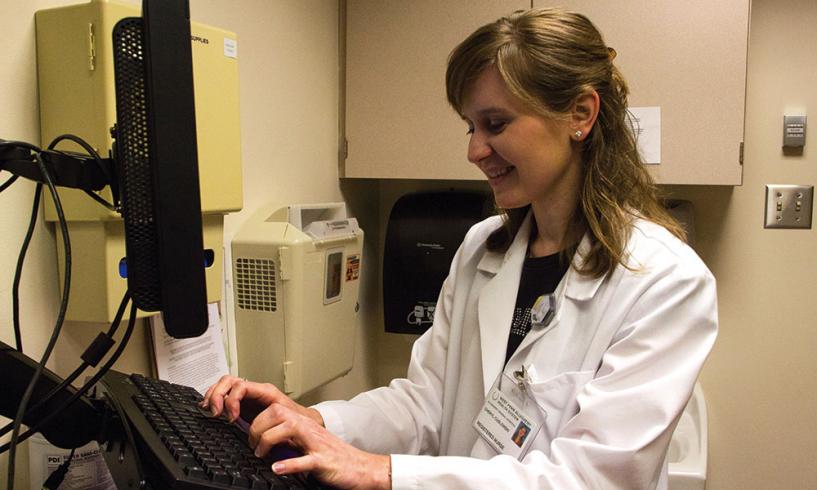In 1995 when a patient died from a chemotherapy overdose at a major medical center, many cancer centers began reexamining their processes for safe chemotherapy administration and putting measures in place to reduce errors. Yet today, little evidence is available about the pervasiveness and extent of chemotherapy-related errors, although some research has suggested that errors are related to prescribing.
Some of the measures instituted to prevent chemotherapy errors include computerized physician order entry, computerized clinical decision support systems, standardized prescribing vocabulary, improved communication, and barcode technology. However, the functionality of electronic systems depends on the people who maintain and update them.
And that’s where verification nurses (VNs) are needed. The American Society of Clinical Oncology/ONS Chemotherapy Administration Safety Standards call for a second person to independently verify each chemotherapy order before preparation. In their article in the February 2016 issue of the Clinical Journal of Oncology Nursing, Baldwin and Rodriguez described how the role of VNs at their institution is meeting this standard.
Role of Chemotherapy Verification Nurses
At Baldwin and Rodriguez’s institution, VNs are experienced oncology nurses who demonstrate advanced knowledge and proficiency in oncology nursing care. They are required to be oncology certified through the Oncology Nursing Certification Corporation (ONCC) and have a BSN. Many also have a chemotherapy provider card and certificate from the ONS/ONCC Chemotherapy Biotherapy Certificate Course.
VNs review chemotherapy orders for completeness and accuracy, including correct dose, route, frequency, and duration of treatment. If they find a discrepancy, they work with the prescriber to correct it and then submit the error as a “near miss” in the institution’s database. They also help create, review, and revise new and current chemotherapy and biotherapy guidelines that serve as a resource to healthcare providers, including nurses and pharmacists. Additionally, they participate in quality improvement initiatives, many of which grow out of the near miss events they’ve identified, and serve as a resource for nurses administering chemotherapy.
Chemotherapy Order Process
Verification by VNs: Chemotherapy is not mixed until a VN reviews the orders. The orders are written by an attending physician, or an attending physician cosigns orders written by a nurse practitioner, physician assistant, or fellow. After an order is entered into an electronic template, the VN reviews it to ensure its completeness and accuracy (i.e., correct drug, dose, frequency, duration, and treatment). If a discrepancy is found, VNs contact the prescriber for clarification or correction.
Clarification: Sometimes, the provider may have changed the care plan midtreatment without recording the explanation. The VN identifies the reason and informs the pharmacist and treating nurse.
Correction: In some cases, the provider may have deviated from treatment guidelines or prescribed in error. The VN contacts the prescriber for correction; if an error occurred, the VN enters and verifies a new order and records the event as a near miss in the institution’s database.
Verification by other interdisciplinary team members: Once a VN has verified the order, a pharmacist also reviews it for accuracy and completeness before mixing the drug and delivering it for administration. This is essentially a mirror step of the VN’s work, a redundancy that ensures the safe administration of chemotherapy. Finally, before the drug is administered, the treating nurse also reviews and verifies the treatment plan, medical record, drug, dose, and schedule. The treating nurse also ensures that the patient’s lab test results, which may not have been available when the VN or pharmacist were reviewing the order, meet treatment parameters.
Effect on Chemotherapy Order Errors
Baldwin and Rodriguez reviewed their institutional data from January 2009–December 2014. During that time, almost 700,000 patients received chemotherapy and 3,767 near miss events occurred (0.4%). The majority of the near misses were found at the point of prescribing and included incorrect dose, wrong frequency or day of treatment, wrong drug, incomplete order, or protocol deviation.
A total of 506 “no harm” events occurred (0.07%); these involved an incorrect rate of drug administration by a treatment nurse or a delay in treatment. Only nine events were entered as “temporary harm” (0.0013%), and no events occurred at the significant harm or death level.
The findings demonstrate VNs’ value in contributing to safe chemotherapy delivery, minimizing errors by identifying their potential prior to the point of administration.
Five-Minute In-Service is a monthly feature that offers readers a concise recap of full-length articles published in the Clinical Journal of Oncology Nursing (CJON) or Oncology Nursing Forum. This edition summarizes “Improving Patient Safety With Error Identification in Chemotherapy Orders by Verification Nurses,” by Abagail Baldwin, MSN, RN, OCN®, and Elizabeth S. Rodriguez, DNP, RN, OCN®, which was featured in the February 2016 issue of CJON. Questions regarding the information presented in this Five-Minute In-Service should be directed to the CJON editor at CJONEditor@ons.org. Photocopying of this article for educational purposes and group discussion is permitted.






